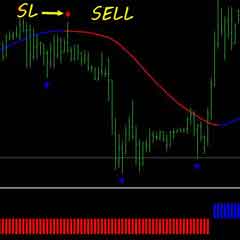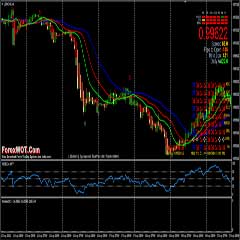How do you earn (or lose) money by short selling? What is the mechanism? What other things can you short beside stocks and forex and how do they work?…
The ‘pure’ principle behind short-selling is effectively selling an instrument (stock, bond, currency) in advance of having actually bought it. You therefore receive cash upfront for something you will then try and actually deliver later, thereby profiting from any potential decline in the instrument’s price.

However, as always, the devil is in the detail! Let me thus begin first by describing the generalised mechanics of a short, and subsequently give a more detailed description of the potential mechanism by which it actually takes place, using broker-enabled share shorts as the example.
Generalised Example:
Groupon shares (GRPN) today trade just above $10. A “pure” short (ignoring transaction costs and actual mechanics) would have you sell the share on the open market, in exchange for receiving $10.
If in a month’s time the share price has declined to $8, you could close your short (buying the share you never owed in order to balance things out) and you will thus effectively have pocketed $10-$8 = $2 in profit.
Had the share price instead moved up to $13 on the date you closed the short, you would have lost $3 ($10-$13). If instead you waited another couple of months and the share price hit $6, closing then would net you $4 in profit ($10-$6).
Detailed Example (Broker-Enabled Share Short):
In practice however, it’s very clear that whilst the short-seller (henceforth referred to as Bob) might benefit from the arrangement described above, it’s really not so clear why anyone (lets call that buyer Alice) would agree to buy anything from Bob that he didn’t actually own!
In fact, in the case of Groupon, which is a listed equity, the exchange platform has very strict rules: you need to deliver the shares by T+3 (3 trading days) – or else be fined/banned etc.
So how does Bob go about shorting Groupon for longer than 3 days?… Well in practice, Bob will contact his broker/banker (Charlie) who will try to find an actual owner of the Groupon share (Dave) who intends to keep it for the long-run.
Bob will therefore come to an arrangement with Dave to temporarily borrow his Groupon shares, in exchange for a (daily) rental fee, and an agreement that Bob will further pay Dave any other money he would have received had he not lent Bob the shares (e.g. dividends). Charlie will further vouch for Bob, in case for some reason Bob is unable to give the shares back if Dave changes his mind.
So let’s look at the mechanic here: Bob borrows 1 share from Dave on day 0. No money changes hands, but every day from then on, Bob needs to pay Dave a rental fee (e.g. 2% APR of the day 0 share price- this fee is negotiable and really depends on supply/demand).
That same day, Bob immediately sells the share he just borrowed, receiving $10 in his account. However, Charlie reminds Bob that Charlie vouched for him, and in order to avoid any future risks, Charlie forces Bob to keep the $10 in a margin account to cover the future cost of buying the share back to give back to Dave. What’s more, Charlie is well aware that the stock could go up, so forces Bob to put up an additional margin (again, negotiable, but 20% is not unusual) into the margin account – so an additional $2.
Let’s summarise the positions again, keeping in mind this is still day 0. Alice now owns the share. Bob has effectively spent $2 of his own cash but holds rights to $12 of cash sitting in a margin account held by Charlie. Dave doesn’t own anything anymore except the rights to a share to be delivered by Bob, secured on the $12 margin account held by Charlie.
Now let’s fast-forward 1 year, and assume that no dividends were paid by Groupon. At this stage, if the share price hasn’t moved, the only change is that Bob had to pay Dave the rental fee of 2% or $0.2. If either Dave or Bob want to close the position, then Charlie uses the $12 in the margin account to buy a share for $10, giving Dave the share and Bob the remaining $2. In the end, Bob will have made a loss of $0.2 on a cash investment of $2 (so -10%), whilst Dave will have gained $0.2 on his $10 share (so +2%). Alice (the rest of the market) will neither have lost nor gained.
What if the share price had instead dropped to $8? In that case, Dave would have received his share back, whilst Bob would have received the $4 left over in the margin account. Bob’s gain would thus have been $4-$2-$0.2=$1.8 on $2 invested or +90%. Meanwhile, Dave has theoretically lost money, since his share is only worth $8, but in practice he’d intended to hold onto it anyways, and in the meantime he made $0.2 in rental fee from Bob, so is better off than he would have been.
Finally, what if the share price had risen to $12 instead? If Dave didn’t want his share back, then there is clearly no incentive for Bob to give it back now (especially if he still thinks the price will fall) as he will then crystallise a loss of $2 + the $0.2 rental fee! However, Charlie has vouched for Bob, so he also gets a say! Depending on their agreement, Charlie may feel this is too much risk now, and force Bob to close the position (this happens, and hurts Bob a lot!). More likely however, Charlie will continue the arrangement, but will require Bob to post more collateral in the margin account in order for there to still be that 20% coverage level- so 120% of $12 or $14.4, meaning Bob is forced to choose between loosing all the money he originally put up, or add another $2.4 to stay in the game.
These are only examples of a wide range of outcomes for the short, but should help highlight the mechanics by which it is implemented and how each participant is incentivised to participate.
As per the example, short-selling can be a very rewarding strategy as it does not necessarily require as much upfront capital; however the potential for loss is significantly greater (and theoretically unlimited).
It is also worth noting that all three participants- Bob, Charlie and Dave have some form of a say as to when the position should be closed, and this is an additional investment risk that can be quite detrimental if badly understood/managed.
Finally, there are many other ways of shorting financial instruments, ranging from the contractual or structured. (derivatives, options, contracts-for-difference, structured products, short ETFs) to the more devious (manipulating settlement times, rolling your naked shorts etc), but all of these are broadly technical variations on the above.











